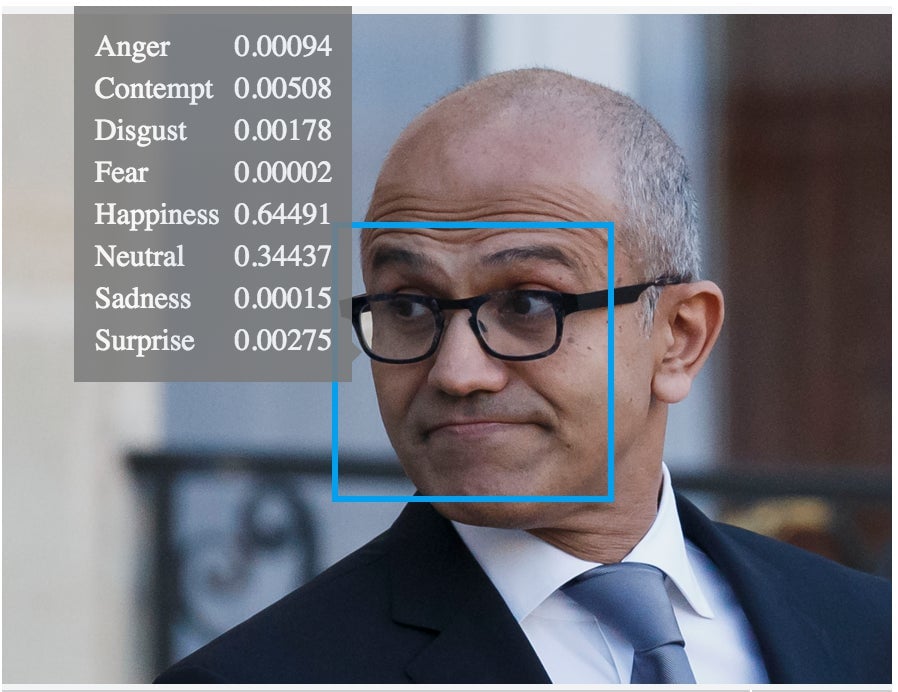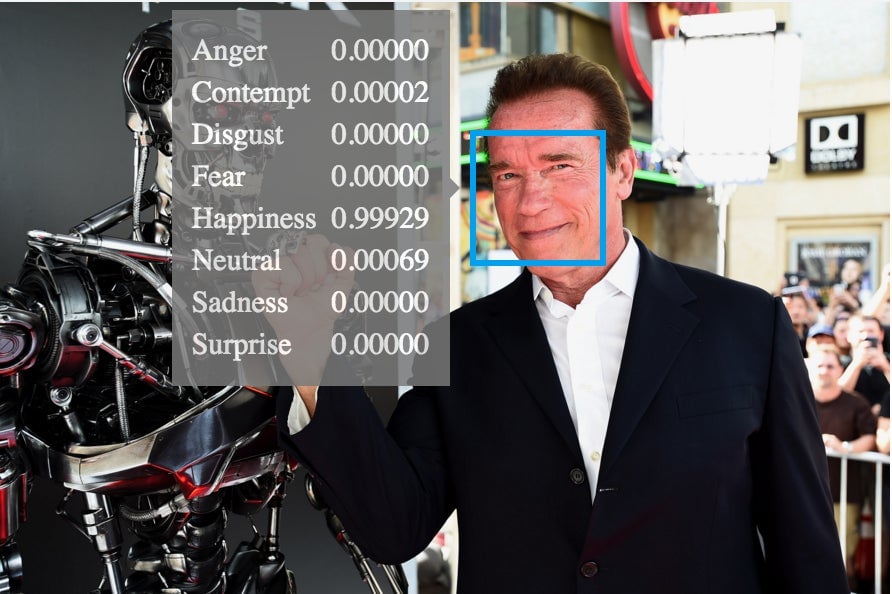Microsoft wants to guess how you’re feeling
Some people can tell how others are feeling just by looking at them; now Microsoft is trying to give computers that same ability. The company launched a new website today (Nov. 11) that uses facial recognition and artificial intelligence to try to determine the emotions of people in photos, and it wants developers to use the technology in their apps.


Some people can tell how others are feeling just by looking at them; now Microsoft is trying to give computers that same ability. The company launched a new website today (Nov. 11) that uses facial recognition and artificial intelligence to try to determine the emotions of people in photos, and it wants developers to use the technology in their apps.
To test out how well Microsoft’s AI program can determine your emotional state, upload a photo to the beta test site on the company’s Project Oxford site—the home for its artificial-intelligence research. The site will then spit out a string of information in a computer-readable list format that might not seem particularly intelligible at first, but would be great for any developer looking to build this technology into an app.
The AI system breaks down your face into gradations of eight emotional states—a few more than Pixar will have us believe there are. To see how the computer thinks you’re feeling, hover over the rectangle around your face and you’ll see the emotions graded on a scale from zero to one, with one representing that you’re feeling that emotion 100%.
Microsoft believed that I was entirely happy on a recent helicopter flight—in reality my smile and thumbs up were merely covering the fact that I was absolutely terrified.

According to the site, Microsoft’s CEO Satya Nadella was pretty happy on a recent trip to France.

And Arnold Schwarzenegger still really enjoys beating up Terminator robots.

Earlier this year, Microsoft debuted a tool that guessed people’s age, which set the internet’s imagination ablaze. This new tool, however, wouldn’t let me upload photos of any non-humans—such as Yoda or Gollum—so it seems we’ll never know the true emotional state of some of our favorite fictional characters.
Microsoft also released a string of other Project Oxford APIs today, including one to track faces in video, one to detect who’s speaking by learning the idiosyncrasies of a person’s voice, and other that recognizes speech better in noisy environments. Microsoft’s voice recognition APIs are also the basis for the company’s own products, including Skype’s translation function, and Cortana, Microsoft’s digital assistant built into its mobile and PC operating systems.
Microsoft also incorporated facial recognition software into its newest PC operating system, Windows 10, that allows users to unlock their devices with their face.
Microsoft is not the only tech behemoth trying to commoditize and disseminate its AI work. IBM’s Watson AI system has had an ever-expanding API library that developers can apply to use for about a year, and earlier this week, Google announced that it was open-sourcing the artificial intelligence work behind its search engine.
The reason for the releases, it seems, is twofold: AI is likely to become one of the main uses for computing in the near future, and letting other people build on research can help spur more innovation. Commercial licensing of the APIs can also provide new ways to make money—something that Google has perfected with its Maps, search and countless other API projects.
While the emotional outputs might not yet be entirely accurate, Microsoft said in a blog post that these systems are machine learning-based, meaning they will get smarter the more data are fed into them. So perhaps in the near future, when a Microsoft-powered AI robot strolls into our living room and sees us sitting there in a huff, it’ll know to leave us alone.